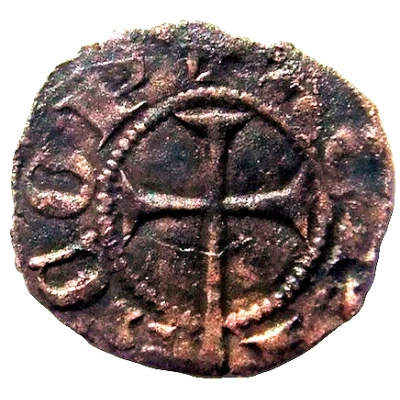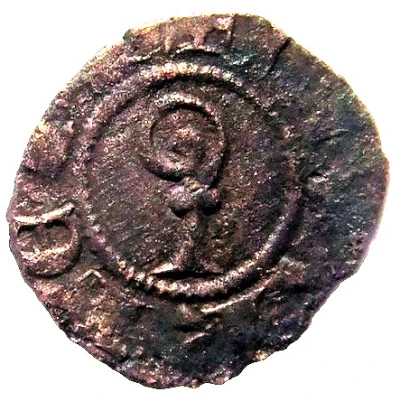


© Quiquengrogne
Obol - Adalbert of Peyre ND
| Billon | 0.5 g | 15 mm |
| Issuer | Bishopric of Viviers (French States) |
|---|---|
| Bishop | Adalbert of Peyre (1297-1306) |
| Type | Standard circulation coin |
| Years | 1297-1306 |
| Value | 1 Obol (½) |
| Currency | Denier |
| Composition | Billon |
| Weight | 0.5 g |
| Diameter | 15 mm |
| Shape | Round (irregular) |
| Technique | Hammered |
| Orientation | Variable alignment ↺ |
| Demonetized | Yes |
| Updated | 2024-10-04 |
| Numista | N#102738 |
|---|---|
| Rarity index | 92% |
Reverse
Crozier to the left.
Script: Latin
Lettering: ✠ VIVARIЄN
Translation: Of Viviers.
Comment
The bishops of Viviers received the right to coin money from Emperor Conrad in 1147. The monetary lease was confirmed by Frederick I Barbarossa (1152-1190) in 1177, then by Frederick II of Hohenstaufen (1197-1250) in 1214.Coinage with a bishop's name began with Guillaume de Falguières (1294-1297) and ceased with Aimar de la Voulte (1326-1365) at the time of the Great Plague in 1348.
Interesting fact
One interesting fact about the Obol coin is that it was used as a form of currency in the Bishopric of Viviers, which was a small state within the French States, during the 14th century. Despite its small size and relatively short lifespan, the Bishopric of Viviers was able to issue its own coins, such as the Obol, which was made of Billon and weighed 0.5 grams. This coin is a rare example of a local currency from this time period and region, and it provides a unique glimpse into the economic and monetary systems of medieval Europe.